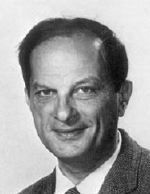

At the age of 10, Stanislaw Ulam entered the gymnasium in Lvov, and about this timehe became interested in astronomy and physics. To understand Einstein's special theory of relativity, he began to study mathematics from books, going well beyond the school level mathematics he was learning. He learned calculus at 16, and taught himself set theory from Sierpinski's book. He entered the Polytechnic Institute in Lvov. There he took a course from Kuratowski.
Ulam obtained his Ph.D. from the Polytechnic Institute in Lvov in 1933, where he studied under Banach.
In 1935, Ulam received an invitation from von Neumann to visit the Institute for Advanced Study in Princeton for a few months. At the Institute, he met Birkhoff who invited him to Harvard University. Every year he commuted between Poland and the United States, and he became a lecturer at Harvard in 1940, and then an assistant professor at the University of Wisconsin. In 1943 Ulam became an American citizen. Also that year, von Neumann
asked him to work on the hydrogen bomb at the Los Alamos National Laboratory in New Mexico, where he solved the problem of how to initiate fusion.
One morning in 1946, a newly appointed professor at the University of Southern California, awoke to find himself unable to speak. A few hours later, he underwent a dangerous surgical operation. In time, however, some changes in his personality became obvious to those who knew him. His ideas, which he spouted out at odd intervals, were fascinating beyond anything I have witenssed before or since. However, he seemed to studiously avoid going into details.
While Ulam was at Los Alamos, he developed the "Monte-Carlo method", which searched for solutions to mathematical problems using a statistical sampling method with random numbers. It is now widely used in computer implementations of mathematical software.
He remained at Los Alamos until 1965, when he was appointed to the chair of mathematics at the University of Colorado. Ulam's writing include A collection of mathematical problems, Sets numbers and universes, and Adventures of a Mathematician.